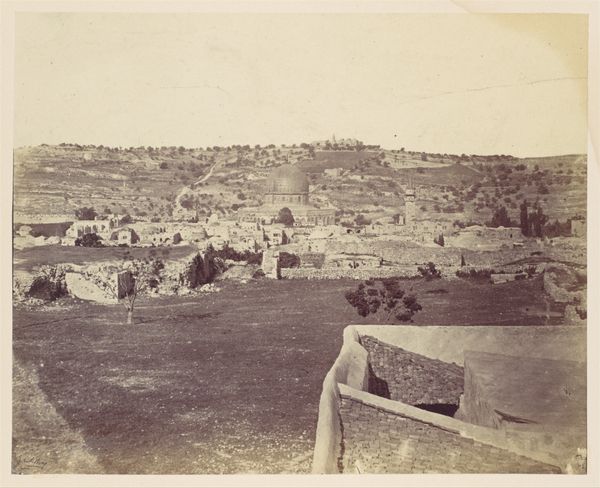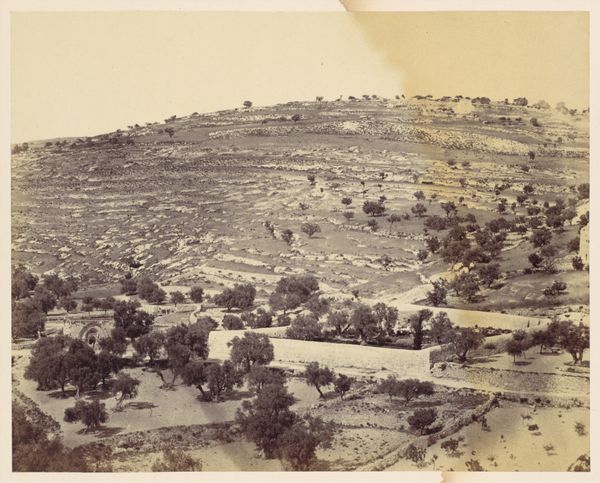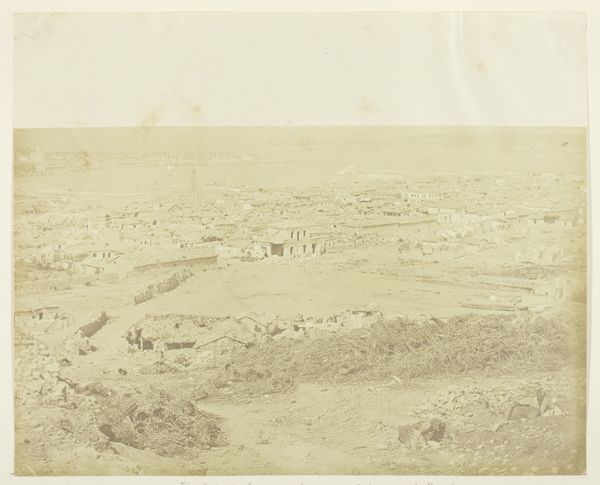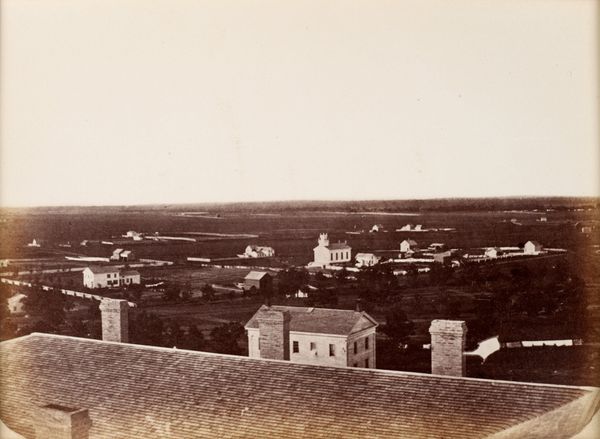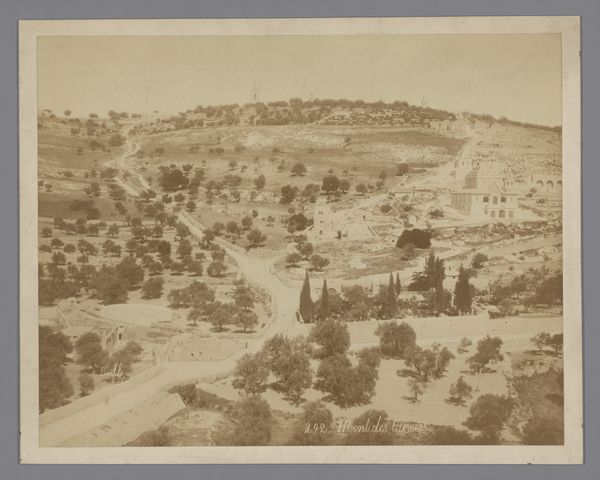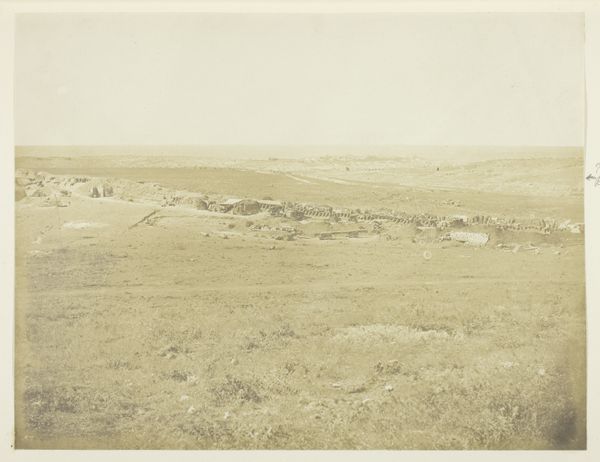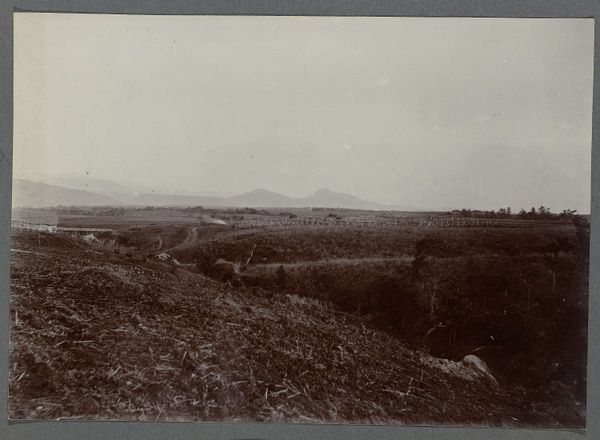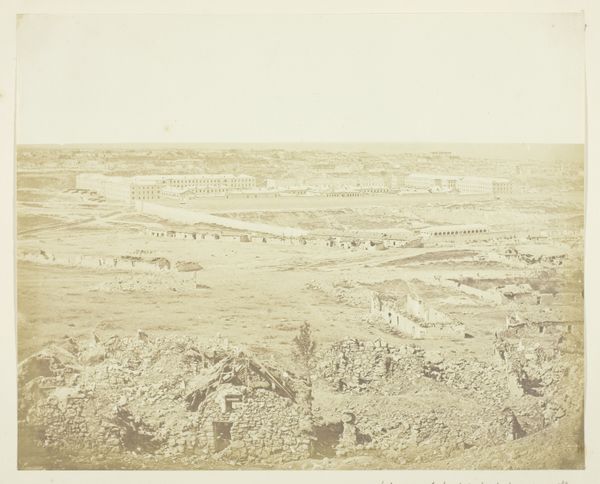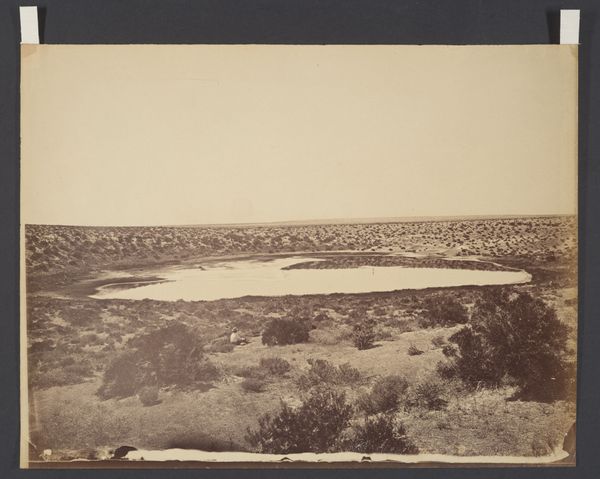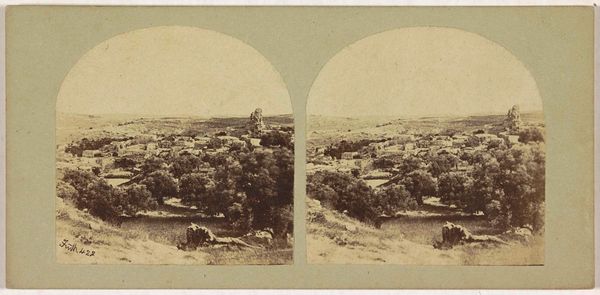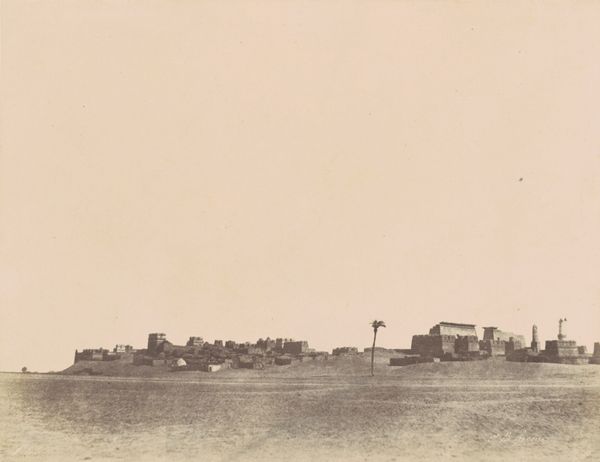![[Jerusalem] by John Anthony](/_next/image?url=https%3A%2F%2Fd2w8kbdekdi1gv.cloudfront.net%2FeyJidWNrZXQiOiAiYXJ0ZXJhLWltYWdlcy1idWNrZXQiLCAia2V5IjogImFydHdvcmtzL2Q1MmY4OTEzLTQzNDEtNGE3Ny1hMzU4LWZhZGIzNzAwNTUzYy9kNTJmODkxMy00MzQxLTRhNzctYTM1OC1mYWRiMzcwMDU1M2NfZnVsbC5qcGciLCAiZWRpdHMiOiB7InJlc2l6ZSI6IHsid2lkdGgiOiAxOTIwLCAiaGVpZ2h0IjogMTkyMCwgImZpdCI6ICJpbnNpZGUifX19&w=3840&q=75)
daguerreotype, photography
#
landscape
#
daguerreotype
#
photography
#
orientalism
#
realism
Dimensions: Image: 16.3 x 21.8 cm (6 7/16 x 8 9/16 in.) Mount: 27.6 x 37.3 cm (10 7/8 x 14 11/16 in.)
Copyright: Public Domain
Curator: Looking at this vista, there's a palpable sense of timelessness. This daguerreotype, titled "[Jerusalem]" created in the 1860s by John Anthony, really encapsulates a particular moment in the history of photographic orientalism. Editor: It's incredibly still, isn't it? I'm drawn to the tactile quality of the foreground, the way the light hits those rocks. I wonder how laborious it was to haul the equipment up here to produce this image. Curator: The scale of this is important to consider; the city is so distant and minimized against the foreground. Consider the context: photography, with its claims to realism, being used to visually document and, in a way, claim the "Orient" for Western audiences. What does it mean to frame a Holy Land this way? Editor: Right, that sense of possession comes through so strongly. Daguerreotypes themselves, encased in their little lockets, almost become objects of colonial desire, tangible pieces of a far-off place brought back to the parlor. Think of the craft and the consumption together. It presents Jerusalem not just as a geographical space but as something you could possess, albeit vicariously. Curator: Exactly! Anthony positions the viewer as an observer, a tourist almost, safely removed from the actual lived experiences within the city. It participates in the power dynamics of its time, reinforcing the Western gaze upon the East. This photograph helped construct and disseminate particular ideas about the Middle East for consumption back in Europe and America. Editor: The processing feels particularly significant here too, it presents the location almost as devoid of human life. That tonality washes the image, and its colonialist undertones, very powerfully. Curator: The lack of vibrant color flattens the exoticism, transforming life into this kind of a fossil. This reinforces this removed observation. But on closer inspection, even within that limitation, details emerge – evidence of a real, existing, active place and society. It’s the tension that intrigues me. Editor: Ultimately, this piece serves as a compelling testament to the intricate blend of technology, craft, and socio-political intent, encapsulated within a single, seemingly straightforward image. Curator: I agree, thinking about that legacy allows me to approach art with informed, critical lenses.
Comments
No comments
Be the first to comment and join the conversation on the ultimate creative platform.

